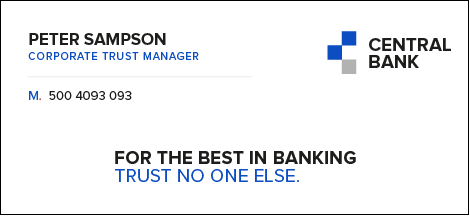Do your company email signatures prevent you from getting a good night’s sleep? Maybe, maybe not. At the very least, maybe it’s time to check and see if they are up to date? Email programs often change. What was a good idea a few years back might be a bad idea today. Perhaps your company has changed too? And are you fully aware of how your email signatures look across all devices (mobile, tablet, desktop, smartwatch, etc)?
Get Xink’s 10 best practice tips for a professional company email signature right here.
Blog post by Louise Bech of Xink, originally posted here: https://xink.io/news/10-best-practice-tips-email-signature/ Reposted here with their permission.

#1 Your brand must be visible – and consistent!
Professional email signatures must be consistent in design and look/feel across the company and platforms. Obviously, your logo is important. It helps brand your company and adds credibility. Make sure your logo fits your signature so your employees never have to move it around or change its size or resolution. You need a standard template to make sure that the email signature design stays the same every time, and is not changeable to employees. Branding is all about consistency and repetition, after all.
#2 Mobile signatures are important
Your emails are being opened and read on smartphones. According to a recent study on the use of emails in 2017, more and more people check their personal AND work emails on mobile devices. This is especially the case for 18-35-year-olds. So please don’t forget to check how your email signatures look on different mobile devices. They can look very different from the desktop version. Maybe you’ve even got the once upon a time this was cool “Sent from my iPhone” text underneath your contact details? If so, please consider changing it! When you consider the amount of mobile readers, there’s a huge branding potential to be explored, and you’re wasting it if you’re telling people what brand smartphone you prefer.
#3 Contact details – what to include?
How much information should you include in the email signature? This is a question we often hear. Every company is different, but most have this information as a minimum requirement:
- Employee’s full name
- Position title
- Phone number
- logo with link to website
In addition to the requirements listed above, many companies encourage or make optional inclusion of the following:
- Employee’s email address (it appears in the sender information too).
- Company pay-off or slogan.

#4 Images in the email signature
Include images in your signature!
Especially for B2C industries (such as real estate companies, banks, health companies, travel platforms, etc) it can be an advantage to show a photo of the employee in the email signature. It just gives a nice touch of personality that just plain text and a logo simply cannot match. In other words, it makes an impersonal message personal. However, if you do opt to use photos (and you should), make sure the photos are professional and consistent. Otherwise it can have a negative effect and look unprofessional.

Read our blog on why images in your signature is a good idea – show it to any potentially skeptical IT professionals too!
#5 Link to social media
Yes, yes and yes! Of course you should include links to the company social media platforms such as LinkedIn, Facebook, Instagram, etc. This is a no-brainer. But some companies let their employees link to their own private accounts as well. That can make sense in some types of jobs and companies. But generally, you want to promote your business in a company email signature. The social media links can bring more traffic to your company website, get you more followers, and ultimately even more conversions. All in all, it is simply a good idea to make it easy for your contacts to get to know your company better (and maybe become a follower).

You might find this interesting: How to get more followers via the email signature.
#6 Create different signatures for different situations
It can get quite heavy (both for your recipient and the email program itself) if your full email signature (with logo, images, links, and marketing campaigns) is included in all emails. That’s why you should create alternative signatures to choose from when necessary. For example, in a longer correspondence where your recipient has already seen your full signature, it might be beneficial to have a pared down version or more basic version of the complete signature. In this way, you’re still benefitting from branding components such as your corporate logo without overwhelming the reader.
#7 How should you sign off?
It’s a simple yet important question: Do you let employees decide on their own how they sign off (i.e., Best Regards, Yours Sincerely, With Love…)? You might argue that it depends on the situation and the relationship between sender and recipient. There really is no right or wrong answer, but consider using a “dynamic sign-off,” with a drop-down menu providing a number of templates with different sign-off options.
#8 Create campaigns below the contact details
We cannot recommend this enough! With a campaign banner you can highlight news about your company, link to your blog, tell you audience about an upcoming event or fair you will attend, and so much more! Email signature campaigns are very effective and can drive more traffic to your website. A professional campaign is a great way to support your overall brand. A company logo is nice, but actively leveraging your email signature for marketing purposes is even better.

Take a look at these email signature campaign examples.
#9 Be creative!
Some of our favorite email signatures master the ability to play on the traditional purpose of an email signature (the contact details) in a surprising, funny, understated way that entails something new and exciting. In can be in the form of an image, infographic, a video, or a message that leaves the reader with a smile on the face – and maybe a hunger to know more about you!
#10 Centrally manage your email signatures
It is always a good idea to centrally manage email signatures if there are more than 10 employees. First of all, you will avoid having to think about whether the email signatures ALWAYS look consistent and professional on different platforms. Second, you will have access to a world of opportunities and powerful analytical tools. This includes data tracking (openings, clicks, etc.), geo-tracking (measure and target content according to where your recipient is located), send-on-behalf-of signatures, management of different signatures to different employee groups, campaign banners, planning of marketing campaigns (to roll out ahead across the company on set dates), and so much more.









